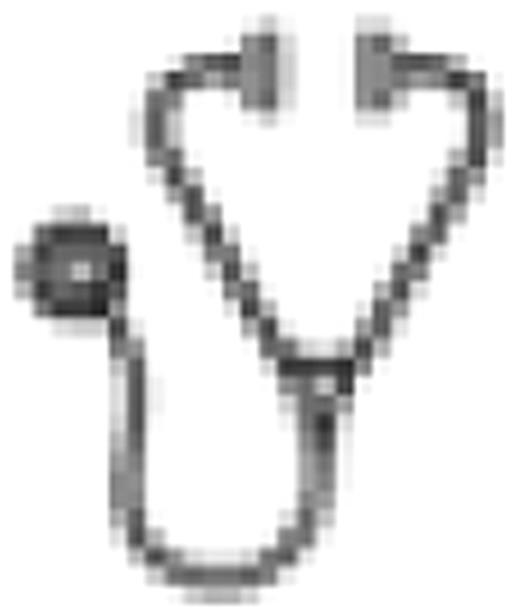Abstract
Abstract 1691
RUNX1 (runt-related transcription factor 1) mutations constitute a disease-defining molecular aberration in myelodysplastic syndromes (MDS) and acute myeloid leukemia (AML). Mechanistically, deregulations occur either through balanced translocations or molecular mutations. Importantly, patient-specific RUNX1 mutations have been proposed to represent clinically useful biomarkers to follow disease progression from MDS to s-AML, as well as to monitor minimal residual disease (MRD) during AML treatment. As such, unbiased methodologies are warranted to provide necessary diagnostic sensitivity and throughput. Here, we investigated 116 samples from 25 patients (18 AML and 7 MDS) using next-generation amplicon deep-sequencing. For a longitudinal analysis starting at diagnosis and following the course of treatment peripheral blood (n=20) or bone marrow specimens (n=96) were obtained between 11/2005 and 6/2010. PCR assays targeting the RUNX1 beta isoform were performed with 60 ng of genomic DNA, obtained from mononuclear cells. In median, 5 time points per patient were analyzed with a median time span of 14 months (range: 5 – 34 months). The median sampling interval was 3.2 months. For each patient, one or more molecular mutations were known from standard testing at diagnosis using a combination of denaturing high-performance liquid chromatography and direct Sanger sequencing. In 166 amplicons covering the full spectrum of RUNX1 mutations we applied the 454 small volume Titanium chemistry assay to perform ultra-deep sequencing of specific PCR products (454 Life Sciences, Branford, CT). In median, 3346 reads per amplicon were generated, thereby allowing a highly sensitive assessment of RUNX1 mutational burden in these patients. As such, at 5% diagnostic sensitivity, 167 reads would cover a certain molecular mutation. At a cut-off of 0.5% sensitivity in median 17 reads were remaining for evaluation. First, we evaluated the concordance of NGS and conventional methods for the samples being taken at initial diagnosis. In all 25 patients deep-sequencing analyses concordantly detected the mutations known from conventional methods, i.e. in total 9 missense mutations, 1 nonsense mutation, 2 in-frame alterations, and 13 frameshift alterations. At initial diagnosis, deep-sequencing detected in AML cases the mutations with a median burden of 44% sequencing reads, whereas in MDS cases in median 35% sequencing reads harbored the mutations, respectively. In 2/25 (8%) cases, deep-sequencing detected additional low-level mutations (0.9% and 3.2%) that were not observed by standard techniques. Secondly, we investigated whether the technique of ultra-deep sequencing would be superior to current routine testing methods during follow-up and in detecting MRD. In 7/25 (28%) patients, an increasing clone size was detectable earlier than by conventional methods. Clone sizes with mutations as low as 0.2% - 7.0% of reads were detectable by NGS up to 9 months earlier during course of disease than by conventional methods. In no case did NGS miss mutations known by conventional methods. Overall, in 12/25 (48%) patients, ultra-deep sequencing revealed additional subclones and enabled the quantitative assessment of their respective clone size. In 6/25 (24%) cases this ultra-deep sequencing approach allowed to then quantitatively monitor the changing composition of parallel subclones per patient during treatment and disease progression. In particular, in two MDS patients dominant clones were proven to disappear during course of the disease and existing low-level or novel clones were emerging at s-AML stage. Similarly, in two AML patients dominant clones were suppressed during chemotherapy. Previously existing low-level mutations, already observed at the stage of initial diagnosis, were then detected at relapse with much greater mutational burden. Finally, in 2/25 cases with mutations concomitantly occurring in the same amplicon deep-sequencing was able to delineate monoallelic or biallelic status of the mutation. In conclusion, RUNX1 mutations are useful biomarkers with clinical utility for the detection of MRD in patients with hematological malignancies. We here demonstrated that amplicon-based NGS is a suitable method to accurately detect and quantify the variety of RUNX1 aberrations with high sensitivity and enables an individualized monitoring of disease progression and treatment efficacy.
Kohlmann:MLL Munich Leukemia Laboratory: Employment. Grossmann:MLL Munich Leukemia Laboratory: Employment. Schindela:MLL Munich Leukemia Laboratory: Employment. Kern:MLL Munich Leukemia Laboratory: Employment, Equity Ownership. Haferlach:MLL Munich Leukemia Laboratory: Employment, Equity Ownership. Haferlach:MLL Munich Leukemia Laboratory: Employment, Equity Ownership. Schnittger:MLL Munich Leukemia Laboratory: Employment, Equity Ownership.

This icon denotes an abstract that is clinically relevant.
Author notes
Asterisk with author names denotes non-ASH members.

This feature is available to Subscribers Only
Sign In or Create an Account Close Modal